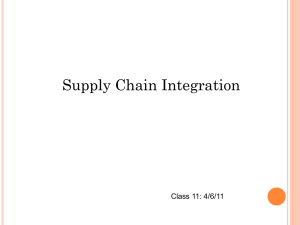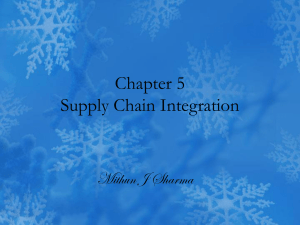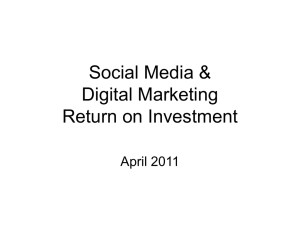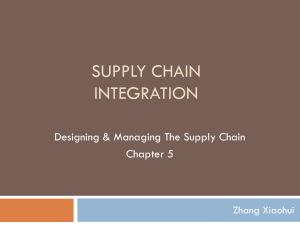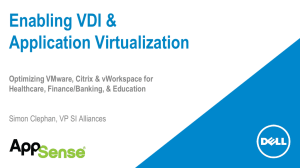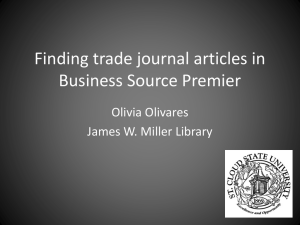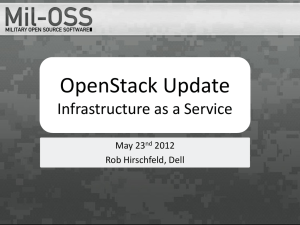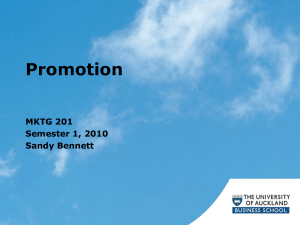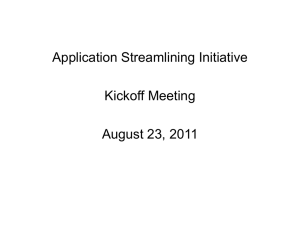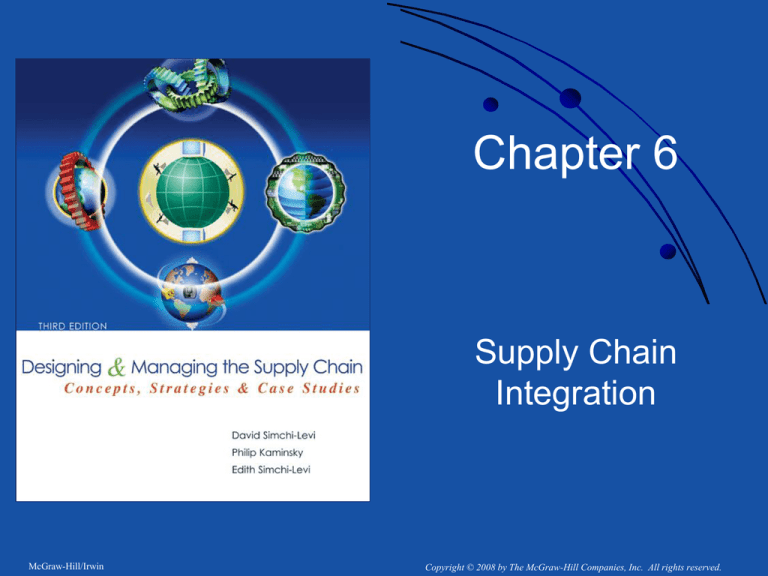
Chapter 6
Supply Chain
Integration
McGraw-Hill/Irwin
Copyright © 2008 by The McGraw-Hill Companies, Inc. All rights reserved.
Dell Desktop PC Supply Chain:
Case Study
Optimizing the Flexibility of
the Desktop PC Supply Chain
©2006 Massachusetts Institute of Technology.
All rights reserved.
Agenda
• L6 vs. L5 Value Comparison
• Root Causes Analysis
• Project Methodology & Next Steps
• Lessons Learned
3
Critical Components of a Desktop PC
& Major Component Manufacturers
Chipset
AMD
Intel
Printed Circuit
Board
BTI Electronics
Compeq
GCE
Plato Electronic
LAN Chip
Broadcom
Intel
Motherboard
ASUS
Foxconn
Intel
MiTAC
Desktop PC
Acer
Apple
Dell
Fujitsu Siemens
Gateway
HP
Lenovo/IBM
Desktop Chassis
ASUS
Flextronics
Foxconn
4
MiTAC
Company list is not comprehensive.
Lite-On Images used on this page belong to the respective companies.
L6 vs. L5
L6
MB
China
Integration
5 Weeks
Chassis
Supplier
Logistics
Center
Dell
Customer
Manufacturing
3rd Party Integrator
L5
(managed by Equipment
Manufacturers)
: L5 additional cost
MB
1 Week
Dell
Chassis
5 Weeks
Supplier
Logistics
Center
Manufacturing
Customer
Problem Statement
Since July 2004, Dell and its contract manufacturers (CMs)
have had to adapt an increasing % of L5 manufacturing:
1. Empty chassis are shipped by ocean (L5) to Dell US &
Europe first. Motherboards are then air-freighted to Dell
US & Europe.
2. Dell incurs motherboard expedite/air-freight cost and 3rdparty integration cost.
3. CMs incur cost for idle labor dedicated for MB-chassis
integration.
6
L6 vs. L5: Value Comparison
L6
L5
•
Integrated offshore & outside a Dell facility
•
Integrated inside a Dell facility
•
Integrated motherboard-inside chassis
shipped on water
•
Chassis shipped on water
•
Motherboards shipped by air
+ Labor savings
+ Increased supply chain flexibility
+ MB air-freighting costs are eliminated
+ Reduced motherboard packaging costs
– Increased motherboard airfreighting costs
– Reduced supply chain flexibility
– 3rd-party integration cost in US
– More motherboards need to be re-worked
in the event of an MB ECN
– Separate logistical costs for
chassis and motherboards
L6 is more cost-effective than L5.
7
L5 Driving Increasing Operational
Cost
MB-Airfreighting & 3PI Integration Costs
Costs of air-freighting MBs and 3PI integration have been increasing.
Worldwide
Procurement
Expedite Council
established
Q3FY05 Act
Q4FY05 Act
Q1FY06 Act
Americas
EMF
Q2FY06 Act
APJ
MDS
Q3FY06 Act
Q4FY06 FCST
Total
AMF includes 3PI integration cost. EMF and APJ don’t as integration is done in Dell factory.
8
L6 vs. L5 Shipments:
% Comparison
L5%
Dell Worldwide L5 vs. L6 Shipments Received
L6%
from a Typical Contract Manufacturer
100%
11%
7%
6%
5%
4%
14%
90%
9%
6%
4%
10%
15%
27%
80%
L5 shipped %
has been
increasing since
March 2005.
70%
60%
50%
89%
93%
94%
95%
96%
86%
40%
91%
94%
96%
90%
85%
73%
30%
20%
10%
0%
Jul-04
Aug-04
Sep-04
Oct-04
Nov-04
Dec-04
Jan-05
Feb-05
Mar-05
Apr-05
May-05
Jun-05
9
Root Causes Analysis
Majority of expedites are caused by chipset supply
shortage.
3.8%
8.3%
Chipset supplier decommit
or supply issues
Quality/Eng Issues
24.5%
Dell Forecast Accuracy
63.5%
NPI
AMF Expedite $ by Root Cause (January to June ’05)
10
Project Scope
Is
Is Not
Desktops
Laptops, servers, storages,
peripherals
DAO (Dell America
Operation)
Outside DAO
Constrained by chipset
supply shortage
To improve chipset supply
Focused on factory
To improve Dell’s demandoperational improvement forecasting ability
Motherboard-chassis
integration
Fans, power supply, SPAMS
(Speakers, Printers,
Advanced Port Replicators,
Monitors, Scanners), or
other components
11
Project Methodology
BPI project team established to evaluate the
following 6 scenarios:
1. Keep as current: 3rd-Party Integrator (3PI) managed by
Equipment Manufacturers
2. DAO Cellular Integration: Enable the Dell factory work cells
to perform L5L10 mfg work
3. Offline Integration: Keep the current L6L10 mfg process
unchanged; add a separate facility to handle MB-chassis
integration work
a. At SLC (Supplier Logistics Center)
b. At a Dell-leased building
4. 3PI managed directly by Dell
5. L6 from Equipment Manufacturers’ Mexico plants
12
Factors to Considered
For each of the 6 scenarios, BPI project team assessed the
following attributes:
1. Process smoothness & sustainability
2. Cost per box
3. Product quality
4. Capital investment
5. Material handling/cost-accounting
6. Logistics
Project Goal:
Identify the optimal scenario
based on these input attributes.
13
Complexity Analysis
Worldwide Procurement
Regional Procurement
Master Scheduler
Production Control
Operations
DAO Quality
Processing Engineering
Supplier Quality Eng
(Regional)
Supplier Quality Eng
(Global)
Cost Accounting
Inventory Control
Logistics
Total:
Cost per Box
Option 2 Option 2
Option 1 (original) (revised)
1
1
10
5
5
8
5
5
5
10
10
5
10
10
1
10
10
5
10
10
1
Option 3A
1
5
5
7
5
5
5
Option 3B
1
5
5
7
5
5
5
Option 4
5
5
5
7
1
1
1
Option 5
10
10
5
5
1
1
1
10
1
1
1
1
5
7
1
5
1
5
57
$10.07
1
1
5
1
60
$7.00
1
1
5
1
60
$7.90
1
10
5
5
55
$7.54
1
10
7
5
57
$7.70
1
10
10
5
56
$7.61
10
1
1
10
62
$7.00
Legend:
The “Cost per Box” data has been modified to respect Dell’s data confidentiality.
Option 1: EM-managed 3PI
Option 2: Integration at DAO work cells
Option 3A: Integration at SLC/hub
Option 3B: Integration at Dell-leased bldg
Option 4: Dell-managed 3PI
Option 5: Integrated chassis from Mexico
14
Option 2 vs. 4: Value Comparison
Option 2: Integration at DAO Work Cells
Option 4: Dell-managed 3PI
+ Lower capital expenditure investment
+ Dell has direct control over the 3PI
+ Less impact to business if chipset supply
reverts to 100% L6
+ More clear definition of quality issues
ownership
+ Fit the Dell Direct model better
– Builder headcount is more difficult to
scale
+ Less manufacturing infrastructure
change required, less impact on
existing supply chain network
– Increased inbound & scheduling
complexity
+ Little additional capital expenditure
investment, little lead time change
– More part numbers to manage
– Only an incremental change from the
original manufacturing design
– Factory thru-put rate is downgraded
Option 4 enables Dell to focus on the more valueadded portion of the MB-chassis integration.
15
Lessons Learned
1. Supply chain coordination requires involvement from all
partners in the chain (customer, supplier, sub-tier
suppliers).
2. A well-planned strategy complements strong operational
execution ability from supply chain partners.
3. Change management requires 3 key ingredients:
• Top-down leadership
• Bottom-up engagement
• Cross-functional coordination
4. Qualitative judgment is just as important as or more
critical than quantitative analysis.
5. Working in a bi-lingual/bi-regional setting has its perks
and challenges.
16
Discussion and Q&A
Questions and Thoughts
17
Back-up
18
Manufacturing Costs: L5 > L6.
Costs Common to L5 and L6
Costs of doing either L5 or L6:
Raw material costs
China materials transportation costs
China assembler's cost (Foxconn performing L1-->L5)
Chassis ocean-shipping cost
Chassis US transportation cost (trucks, rail)
Chassis inventory holding cost at SLC
US assembler's cost at Dell (from L7-->L10)
Type
Materials
Logistics
Labor
Logistics
Logistics
Inventory Holding
Labor
L6 Only Costs
L5 Only Costs
Costs of doing L6, rather than L5:
China assembler's cost (Foxconn performing L6)
Costs of doing L5, rather than L6:
Motherboard packaging cost
Motherboard air-freight/expedite cost
Motherboard US transportation cost
Motherboard inventory holding cost at SLC
Chassis & motherboard US transportation cost
(from SLC to local/regional integrator and back)
Local/regional integration cost (Accurate, Saberex)
Motherboard rework cost at Dell
Dell L5 mgmt cost (e.g. Expedite Council)
Type
Labor
Type
Materials
Logistics
Logistics
Inventory Holding
Logistics
Labor
Labor/Quality
Labor
19
Pros & Cons of the 6 Options
1
Description
Pros
Cons
Current
Process, EMmanaged 3PI
• Least impact for Ops & PE
• Most expensive option
• Dell does not own inventory during MBchassis integration at 3PI
• WWP and Regional Procure. have more intense EM and
3PI mgmt/coordination
• Most difficult option for SQE
2
L6 at Dell
work cells
• Less complex for WWP
• Long ramp time of new builders
• SQE mgmt is reduced
• Difficult for PC to run deviations of both L5 and L6 in
one process simultaneously
• L5 and L6 parts are ordered and tracked
independently clear-cut Cost Accounting
• Easiest option for Logistics
• Work cells config need to change Greatest impact
for Ops and PE
• Less complex for WWP
• Most complex for Cost Accounting
• SQE mgmt is reduced
• Extra PC and IC headcounts required
• DAO Quality concern from an L5-L6 hybrid mfg model
3
A
L6 at Dell SLC
3
B
L6 at Dellleased
external
location
• Less complex for WWP
• Most complex for Cost Accounting and IC
• SQE mgmt is reduced
• Extra PC and IC headcounts required
Dell-managed
3PI
• Easiest option for Ops & PE
L6 from EM
(China,
Mexico,
and/or
elsewhere)
• Lowest possible cost compared to China L6
4
5
• Requires additional lease commitment
• DAO Quality expected to improve as Dell
directly manages 3PI
• Most complex for Cost Accounting and IC – difficult to
manage Parts Cost at a Dell-managed 3PI
• Overall easiest option for Dell
• Requires Regional Procure. to manage L6 out of EM
facilities from China, Mexico, and possibly other regions.
• Most manageable for Master Sch./COC, PC,
IC, Ops, and DAO Quality
20
• Multi-regional logistics coordination is a concern.
• Increased SQE mgmt
6.1 Introduction
Effective SCM implies:
Improve performance: reduce cost, increase service
level, reduce the bullwhip effect, better utilize
resources, and effectively respond to changes in the
market place.
Challenges can be met by integrating:
Efficient integration of suppliers, manufacturers, warehouses,
and stores.
Coordinate activities across the supply chain
the front-end, customer demand,
to the back-end, production and manufacturing portion of the
supply chain.
Various supply chain integration strategies:
Push, pull, push–pull strategy.
Matching products and industries with supply chain
strategies.
Demand-driven supply chain strategies.
The impact of the Internet on supply chain integration.
6-21
6.2 Push, Pull, Push-Pull
Systems
Push and Pull traditional categories of
manufacturing operations
More recent hybrid strategy of combining
the two, Push-Pull systems
6-22
Push-Based Supply Chains
Production and distribution decisions based on
long-term forecasts.
Manufacturer demand forecasts based on
orders received from the retailer’s warehouses.
Longer reaction time to changing marketplace:
Inability to meet changing demand patterns.
Obsolescence of supply chain inventory as demand
for certain products disappears.
Variability of orders received much larger than the
variability in customer demand due to the bullwhip
effect.
Excessive inventories due to the need for large safety
stocks
Larger and more variable production batches
Unacceptable service levels
Product obsolescence
6-23
Bullwhip Effect in Push-Based
Supply Chains
Leads to inefficient resource utilization
Planning and managing are much more difficult.
Not clear how a manufacturer should determine
production capacity? Transportation capacity?
Peak demand?
Average demand?
Results:
Higher transportation costs
Higher inventory levels and/or higher manufacturing
costs
more emergency production changeovers
6-24
Pull-Based Supply Chains
Production and distribution demand driven
Coordinated with true customer demand rather than
forecast demand
firm does not hold any inventory and only responds to
specific orders.
Intuitively attractive:
Reduced lead times through the ability to better
anticipate incoming orders from the retailers.
Reduced inventory since inventory levels increase
with lead times
Less variability in the system
Decreased inventory at the manufacturer due to the
reduction in variability.
6-25
Implementation of Pull-Based
Systems
Often difficult to implement
when lead times are long
impractical to react to demand information.
more difficult to take advantage of economies of scale
Advantages and disadvantages of push and pull
supply chains:
new supply chain strategy that takes the best of both.
Push–pull supply chain strategy
6-26
Push-Pull Strategy
Some stages of the supply chain operated
in a push-based manner
typically the initial stages
Remaining stages employ a pull-based
strategy.
Interface between the push-based stages
and the pull-based stages is the push–
pull boundary.
6-27
Supply Chain Timeline
FIGURE 6-8: Push-pull supply chains
6-28
General Strategy
Make a part of the product to stock –
generic product
The point where differentiation has to be
introduced is the push-pull boundary
Based on extent of customization, the
position of the boundary on the timeline is
decided
6-29
Identifying the Appropriate Supply
Chain Strategy
FIGURE 6-9: Push-pull supply chains
6-30
Impact of Demand Uncertainty and
Economies of Scale
Demand Uncertainty:
Higher demand uncertainty leads to a preference for
pull strategy.
Lower demand uncertainty leads to an interest in
managing the supply chain based on a long-term
forecast: push strategy.
Economies of scale:
The higher the importance of economies of scale in
reducing cost
The greater the value of aggregating demand
The greater the importance of managing the supply chain based
on long-term forecast, a push-based strategy.
Economies of scale are not important
Aggregation does not reduce cost
A pull-based strategy makes more sense.
6-31
Implementing a Push–Pull Strategy
Achieving the appropriate design depends
on many factors:
product complexity
manufacturing lead times
supplier–manufacturer relationships.
Many ways to implement a push–pull
strategy
location of the push–pull boundary.
Dell
locates the boundary at the assembly point
Furniture manufacturers locate the boundary at the
production point
6-32
Impact of the Push-Pull Strategy
Push portion
Low uncertainty
Service level not an issue
Focus on cost minimization.
Long lead times
Complex supply chain structures
Cost minimization achieved by:
better
utilizing resources such as production and
distribution capacities
minimizing inventory, transportation, and
production costs.
Supply Chain Planning processes are applied.
6-33
Impact of the Push-Pull Strategy
Pull portion
High uncertainty
Simple supply chain structure
Short cycle time
Focus on service level.
Achieved by deploying a flexible and
responsive supply chain
Order-fulfillment processes are applied
6-34
Characteristics of the Push and
Pull Portions of the Supply Chain
Portion
Push
Pull
Objective
Minimize cost
Maximize service level
Complexity
High
Low
Focus
Resource allocation
Responsiveness
Lead time
Long
Short
Processes
Supply chain planning
Order fulfillment
6-35
Interactions of the Two Portions
Only at the push-pull boundary
Typically through buffer inventory
Different role for the inventory in each portion
In the push portion, buffer inventory is part of the
output generated by the tactical planning process
In the pull system, it represents the input to the
fulfillment process.
Interface is forecast demand
Forecast based on historical data obtained from the
pull portion
Used to drive the supply chain planning process and
determine the buffer inventory.
6-36
6.3 The Impact of Lead Time
Longer the lead time, more important it is
to implement a push based strategy.
Typically difficult to implement a pull
strategy when lead times are so long that
it is hard to react to demand information.
6-37
Impact of Lead Time
FIGURE 6-10: Matching supply chain strategies with products:
the impact of lead time and demand uncertainty
6-38
Impact of Lead Time
Box A
Box B
Items with short lead time and high demand uncertainty
Pull strategy should be applied as much as possible.
Items with long supply lead time and low demand uncertainty.
Appropriate supply chain strategy is push.
Box C
items with short supply lead time and highly predictable demand.
Continuous replenishment strategy
Suppliers receive POS data
They use these data to prepare shipments at previously agreedupon intervals
A pull strategy at the production and distribution stages and push at
the retail outlets.
Box D
Items with long lead times are long and unpredictable demand
Inventory is critical in this type of environment
Requires positioning inventory strategically in the supply chain
6-39
6.4 Demand-Driven Strategies
Requires integrating demand information
into the supply chain planning process
Demand forecast:
Use
historical demand data to develop long-term
estimates of expected demand
Demand shaping:
Firm
determines the impact of various marketing
plans such as promotion, pricing discounts,
rebates, new product introduction, and product
withdrawal on demand forecasts.
6-40
Forecast Errors Are Always Present!
High demand forecast error has a detrimental impact on
supply chain performance
Approaches to improve accuracy
Aggregate forecasts are more accurate,
Use market analysis and demographic and economic trends
to improve forecast accuracy (see Chapter 2 for details).
Determine the optimal assortment of products by store
Select the push–pull boundary so that demand is aggregated over
one or more of the following dimensions:
Across products/geography/time
Reduce the number of SKUs competing in the same market.
Incorporate collaborative planning and forecasting
processes with your customers
Demand forecast by SKU by location has to be supported
by the supply chain
Interaction of demand planning and tactical supply planning
Iterative process
6-41
6.5 The Impact of the Internet on
Supply Chain Strategies
Expectation that increasing use of the
internet would solve a lot of the business
problems
Reality was very different
Many of the problems in the internetbased businesses were related to
logistics strategies
6-42
Successes and Failures
Notable Failures
Furniture.com
Peapod.com
Notable Successes
Amazon.com
Hybrid of successes and failures
Cisco
$2.2B
inventory write-off in 2001
Has been successful in leveraging the internet
subsequently
6-43
E-Business
E-business: a collection of business
models and processes motivated by
Internet technology and focusing on
improvement of extended enterprise
performance.
E-commerce: ability to perform major
commerce transactions electronically.
6-44
Key Observations
e-commerce is only part of e-business.
Internet technology is the force behind the
business change.
Focus on the extended enterprise
Business-to-consumer (B2C)
“direct to customer,”
Retail activities over the Internet, and includes
products, insurance, banking, and so forth.
Business-to-business (B2B)
Conducted over the Internet predominantly between
businesses.
Includes:
electronic sourcing (the so-called eSourcing)
reverse auctions
collaboration with suppliers and vendors to achieve
common goals.
6-45
Grocery Industry
Typical supermarket employs a push-based strategy
Peapod was built on pure pull strategy with no inventory
and no facilities.
Significant service problems with high stockout rates
Changed to a push–pull strategy by setting up a number of
warehouses
Warehouse covers a large geographical area
Other challenges:
Aggregated demand
Reducing transportation costs
Short response time
Low customer density
Products have low demand uncertainty
high economies of scale in transportation cost
push-based strategy is more appropriate.
6-46
Book Industry
Initial model of Amazon.com a pure pull system with no
warehouses and no stock.
Ingram Book Group supplied most of Amazon’s customer
demand.
As volume and demand increased:
Amazon.com’s service level was affected by Ingram Book’s
distribution capacity
Using Ingram Book in the first few years allowed Amazon.com to
avoid inventory costs but significantly reduced profit margins.
Current Amazon.com:
As demand increased distributor no longer required.
Several warehouses around the country where most of the titles
are stocked.
Inventory at the warehouses is managed using a push strategy
Demand satisfied based on individual requests, a pull strategy.
Slow moving low volume books and CDs are not stocked
at Amazon distribution centers
Amazon orders those when demand arrives.
6-47
General Retail Industry
Late to respond to competition from virtual
stores and to recognize the opportunities
provided by the Internet.
Brick-and-mortar companies are adding an
Internet shopping component to their offering.
Already have the distribution and warehousing
infrastructure
Click-and-mortar firms
High-volume, fast-moving products stocked in stores
Push strategy
Low-volume, slow-moving products are stocked
centrally
Push-Pull strategy
6-48
Traditional Fulfillment Versus eFulfillment
Traditional fulfillment
E-fulfillment
Supply chain strategy
Push
Push–pull
Shipment
Bulk
Parcel
Reverse logistics
Small part of the business
Important and highly complex
Delivery destination
Small number of stores
Large number of geographically
dispersed customers
Lead times
Relatively long
Relatively short
6-49
Summary
Implementation of push-pull strategies and
demand-driven strategies have helped many
companies to improve performance, reduce
costs, increase service levels.
Collapse of many Internet companies shows that
e-business has great challenges.
Companies need to:
Identify the appropriate supply chain strategy for
individual products.
Case for no physical infrastructure or inventory is
tenuous
Push–pull strategy
advocates holding inventory
although it pushes the inventory upstream in the supply
chain.
6-50

